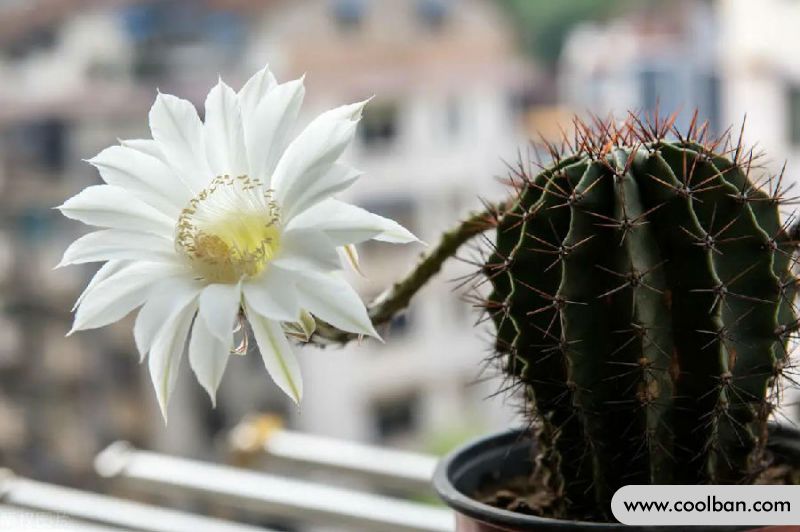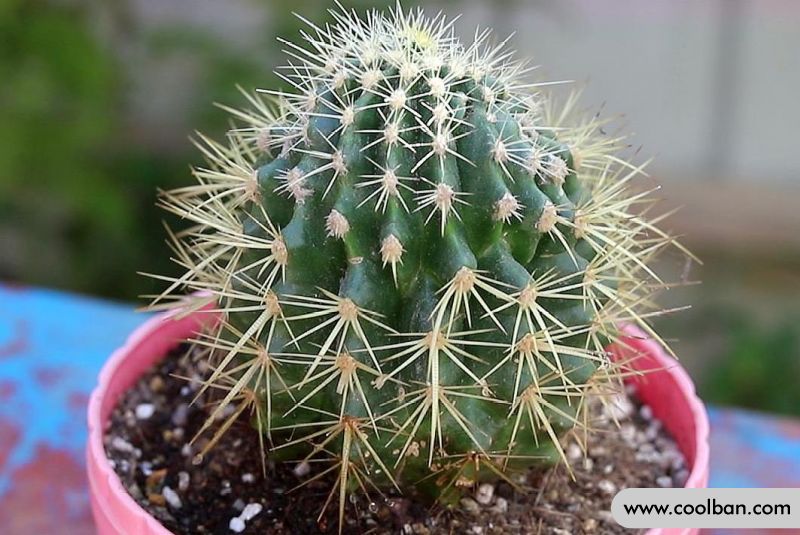Are prickly pears radiation-proof?
Today's office workers like to keep two pots of cactus next to their computers - easy to feed, and said to protect against radiation. Does it really work? There is radiation around, computers have radiation, and mobile phones have radiation, so if you put a cactus next to the computer or in a high radiation area, many people still ask, "Is the cactus protected from radiation?" So are the cactus really protected from radiation?

Can cactus protect against radiation?
Prickly pear radiation protection. Although many people buy it to keep next to their computer, there are still doubts. The prickly pear seems to be widely recognized as the master of radiation protection, and no one has gone to the depths of whether it has such a function.
In life and work, cactus has the function of absorbing electromagnetic radiation. Cacti open their breathing holes at night, releasing large amounts of oxygen while absorbing carbon dioxide. Placing a pot of cactus indoors or in the office can indeed purify the air, release oxygen, increase air humidity, reduce the impact of radiation on human health, and protect human health.
From a scientific point of view, there is no radiation protection for any plant. Because there are only two ways to prevent radiation, one is to block it, and the other is to use strong electromagnetic fields to deflect the rays. The cactus placed next to the computer does not have these two functions, but it is more resistant to radiation. The reason why cactus is radiation-proof is that cactus can provide people with a good working environment by purifying the air and releasing oxygen, thereby reducing the damage of radiation to the human body.
Plant a pot of cactus that absorbs only the sun's UV rays. It grows in desert areas with severe ultraviolet radiation from the sun, so it has certain anti-ultraviolet radiation properties to adapt to dry wells. The prickly pear's breathing holes open at night, allowing it to release large amounts of oxygen while absorbing carbon dioxide. Increases the concentration of negative ions in indoor air, so place this plant next to appliances in your home or office.

How often do you water the cactus
The watering interval of the cactus should be well controlled, because more and more watering will easily cause the spheroid to rot, and less watering will easily cause the spheroid to dry out. It is recommended not to water the newly bought cactus or the newly planted cactus. At this time, the roots of the cactus have not grown steadily.
Summer is the growing season of cactus, which requires more water. If you see that the soil of the cactus is too dry, you can water it, which can not only cool down but also replenish water. If it is placed in a shaded place indoors, you should reduce watering appropriately. number of times.
In autumn and spring, when watering the cactus, it can be controlled to water 1-2 times a week. In winter, the cactus stops growing and is in a dormant period. It is recommended not to water at this time, even if the soil in the pot is dry.
Cactus watering time is best in the early morning in summer, before noon in sunny weather in winter, and in the morning and evening in spring and autumn. When watering, you should also be careful not to pour water from the top of the cactus, otherwise the cactus will not look good and will appear spots.

Precautions for cactus planting
Cactus is easy to maintain and easy to maintain, heat-resistant and drought-resistant, and has become the first choice for family flower cultivation. Not only is it beautiful and clean, but it doesn't take much time to take care of exterminators. With proper care, it will not only grow fast, but also have bright spheres and lush flowers. Cacti will grow well if all the precautions for growing cactus are done, including: temperature, light, potting soil, planting, potting methods, watering, fertilizing, and pest control.
Note 1: Cactus needs full sun, but cannot be exposed to strong sunlight in summer and needs proper shade. Indoor cultivation can be exposed to light to make it grow robustly.
Note 2: For potted cactus, a tiled pot with strong air permeability should be used, and broken bricks should be placed on the bottom of the pot as a drainage layer. The palm root cluster is small, the planting pot should not be too large, the diameter of the pot should be similar to the diameter of the plant body, and it is beautiful and harmonious. When changing pots, part of the old roots should be cut off, dried for 4-5 days before planting in pots, and the planting should not be too deep.
Note 3: The best watering time is in the early morning in summer, before noon on sunny days in winter, and in the morning and evening in spring and autumn. In general, don't spray water from the top, or you'll get unsightly spots on the sphere over time. Under normal circumstances, watering must be sufficient, so the soil should be loosened frequently, so that the basin soil can easily absorb enough water evenly.
Note 4: Prevention and control of pests and diseases: Prickly pear's pests and diseases mainly include anthracnose, canker, scale insects and whiteflies. Mainly to control moisture, timely ventilation, prevention first. Carbendazim has a certain effect on anthracnose, and streptomycin is more effective on canker, but mainly for prevention.
Note 5: Cactus is a spiny plant and flower. When changing pots and transplanting, you should wear gloves to avoid stab wounds.
